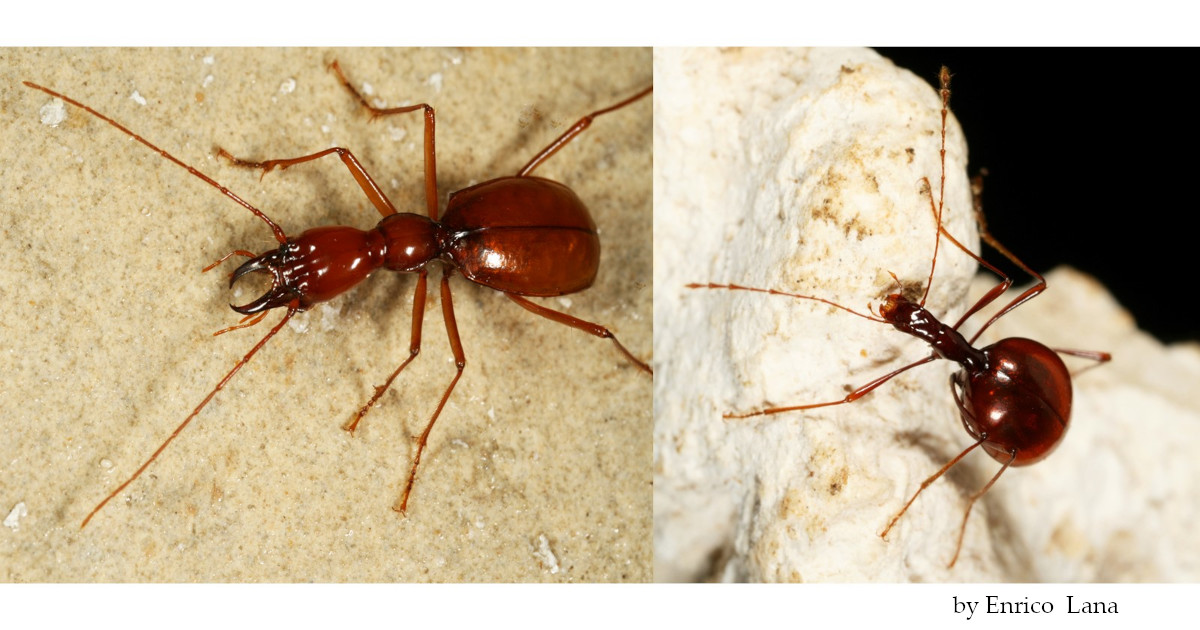Diversity, Distribution and Zoogeography of Coleoptera
A special issue of Diversity (ISSN 1424-2818). This special issue belongs to the section "Animal Diversity".
Deadline for manuscript submissions: 30 November 2024 | Viewed by 7604

Special Issue Editors
Interests: Coleoptera; Curculionoidea; taxonomy; phylogeny; zoogeography; forest litter weevils
Special Issues, Collections and Topics in MDPI journals
Interests: Coleoptera: Carabidae; Leiodidae; taxonomy; systematic; phylogeny; zoogeography; subterranean environment
Special Issues, Collections and Topics in MDPI journals
Special Issue Information
Dear Colleagues,
We are pleased to inform you of the preparation of a Special Issue of the journal Diversity titled “Diversity, Distribution and Zoogeography of Coleoptera”.
A good taxonomic knowledge is the starting point for any study by conservationists, ecologists, biodiversity scientists, and many others, who rely heavily on taxonomic information to manage, conserve, use, and share our biodiversity. Unfortunately, even though roughly 400,000 taxa of Coleoptera—the largest of all orders—have been described, a much higher number of species remain unknown, particularly from coenoses that have the highest ecological importance and are highly threatened, such as tropical forests. The worldwide shortage of this essential taxonomic information, the gaps in our taxonomic knowledge, and the paucity of trained taxonomists has come to be known as the taxonomic impediment. Any effort that helps to increase the knowledge of Coleoptera is therefore highly welcome.
A very important field of investigation is biogeography, the study of the distribution of species and ecosystems in geographic space and through geological time. Modern biogeographic research combines information and ideas from many fields, from the physiological and ecological constraints on organismal dispersal to geological and climatological phenomena operating at global spatial scales and evolutionary time frames, and its results are even more important now because they can help in understanding the capability of organisms to respond to global warming.
It is evident that the biogeographical analysis of any animal or plant group is inescapable from a proper systematic baseline, with particular regard to a reliable knowledge of phylogenetic relationships. The development of the cladistic approach to phylogenetic problems, whether based on a traditional morphological approach or in combination with molecular techniques, has made it possible to eliminate many of the uncertainties associated with the personal conception of the specialist. In this, we have been aided by the increasing development of computer systems for cladistic analysis and their availability online. There are currently computer programs that can be easily implemented to analyze the distribution of various taxa.
The purpose of this Special Issue is to provide a space to accommodate important contributions to the knowledge of Coleoptera biodiversity, and to provide information on the current state of zoogeographical information about the order of insects with the largest number of species in the world.
You may choose our Joint Special Issue in Taxonomy.
Prof. Dr. Massimo Meregalli
Dr. Pier Mauro Giachino
Guest Editors
Manuscript Submission Information
Manuscripts should be submitted online at www.mdpi.com by registering and logging in to this website. Once you are registered, click here to go to the submission form. Manuscripts can be submitted until the deadline. All submissions that pass pre-check are peer-reviewed. Accepted papers will be published continuously in the journal (as soon as accepted) and will be listed together on the special issue website. Research articles, review articles as well as short communications are invited. For planned papers, a title and short abstract (about 100 words) can be sent to the Editorial Office for announcement on this website.
Submitted manuscripts should not have been published previously, nor be under consideration for publication elsewhere (except conference proceedings papers). All manuscripts are thoroughly refereed through a single-blind peer-review process. A guide for authors and other relevant information for submission of manuscripts is available on the Instructions for Authors page. Diversity is an international peer-reviewed open access monthly journal published by MDPI.
Please visit the Instructions for Authors page before submitting a manuscript. The Article Processing Charge (APC) for publication in this open access journal is 2600 CHF (Swiss Francs). Submitted papers should be well formatted and use good English. Authors may use MDPI's English editing service prior to publication or during author revisions.
Keywords
- taxonomy
- systematics
- phylogeny
- zoogeography
- paleogeography
- cladistic approach
- molecular approach
- morphological approach
- distribution pattern
Related Special Issue
- Diversity, Distribution and Zoogeography of Coleoptera in Taxonomy (2 articles)






